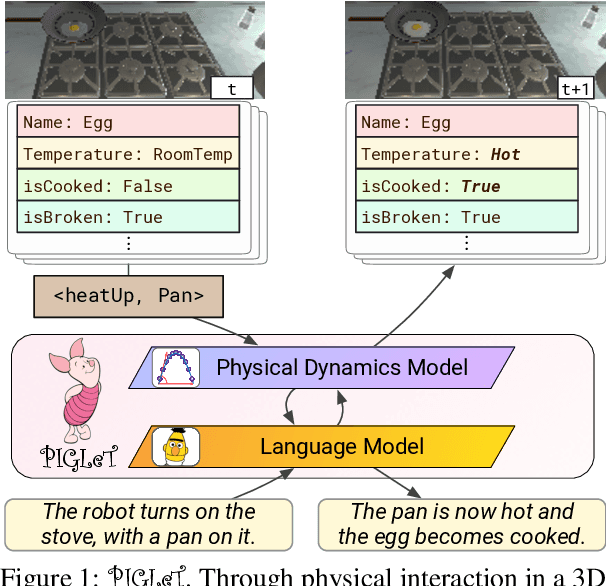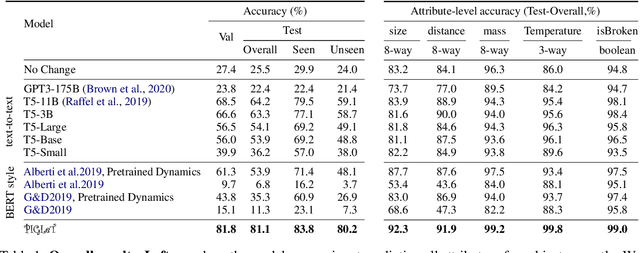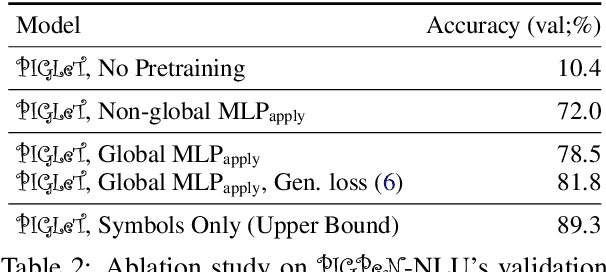PIGLeT: Language Grounding Through Neuro-Symbolic Interaction in a 3D World
Paper and Code
Jun 01, 2021



We propose PIGLeT: a model that learns physical commonsense knowledge through interaction, and then uses this knowledge to ground language. We factorize PIGLeT into a physical dynamics model, and a separate language model. Our dynamics model learns not just what objects are but also what they do: glass cups break when thrown, plastic ones don't. We then use it as the interface to our language model, giving us a unified model of linguistic form and grounded meaning. PIGLeT can read a sentence, simulate neurally what might happen next, and then communicate that result through a literal symbolic representation, or natural language. Experimental results show that our model effectively learns world dynamics, along with how to communicate them. It is able to correctly forecast "what happens next" given an English sentence over 80% of the time, outperforming a 100x larger, text-to-text approach by over 10%. Likewise, its natural language summaries of physical interactions are also judged by humans as more accurate than LM alternatives. We present comprehensive analysis showing room for future work.
 Add to Chrome
Add to Chrome Add to Firefox
Add to Firefox Add to Edge
Add to Edge